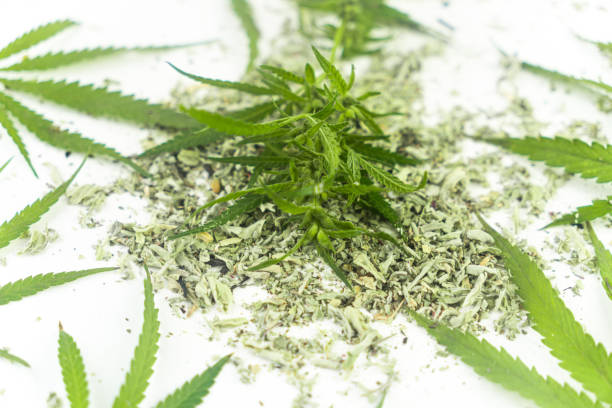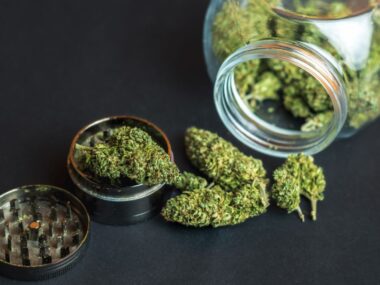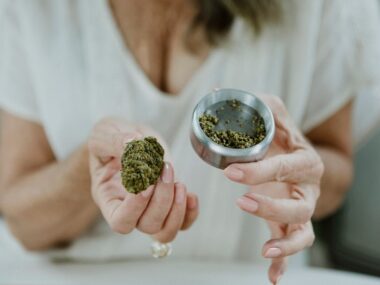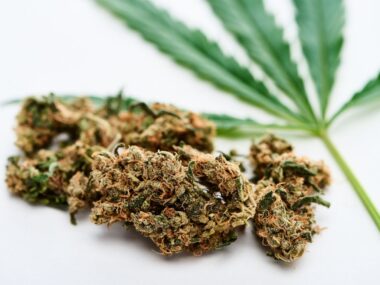As cannabis concentrates continue to rise in popularity, budder has become a favorite among enthusiasts. Known for its unique texture, potency, and flavor, budder is one of the many cannabis extracts on the market, offering a smooth, buttery experience for both seasoned users and newcomers. This versatile concentrate has earned a reputation for being easy to handle and packed with cannabinoids and terpenes, making it a go-to choice for those seeking a powerful and flavorful cannabis experience.
In this guide, we’ll dive deep into what budder is, how it’s made, why it’s popular, and how to use it effectively.
What Is Budder?
Budder is a type of cannabis concentrate that has a creamy, whipped consistency, similar to butter—hence the name. It’s created through an extraction process that preserves high levels of cannabinoids and terpenes, resulting in a product that’s not only potent but also flavorful.
Budder falls under the umbrella of BHO (Butane Hash Oil) concentrates, as it’s typically made using butane or another solvent to extract the desired compounds from the cannabis plant. After extraction, the concentrate is whipped during the purging process, giving it its characteristic soft, malleable texture.
Characteristics of Budder
- Texture: The standout feature of budder is its smooth, creamy consistency. Unlike harder concentrates such as shatter, budder is soft, making it easy to manipulate and portion out.
- Potency: Budder is highly potent, often containing THC levels upwards of 70-90%. This makes it one of the stronger forms of cannabis, ideal for experienced users or those seeking intense effects.
- Flavor: Because the extraction process retains a high concentration of terpenes, budder is known for its rich flavor profile. Whether you’re looking for fruity, earthy, or skunky notes, budder delivers a flavorful hit with every dab.
- Appearance: Budder typically has a light yellow or golden color, though this can vary depending on the strain used and the extraction method.
How Budder Is Made
Budder is created through a solvent-based extraction process, usually involving butane or propane. Here’s a step-by-step look at how budder is made:
1. Extraction
The first step in making budder is to extract the cannabinoids and terpenes from the cannabis plant. This is done by passing a solvent (commonly butane) through the plant material to dissolve the active compounds. The solution that’s produced contains a mixture of butane, cannabinoids, and terpenes.
2. Purging
Once the extraction process is complete, the solvent needs to be removed from the solution to create a clean concentrate. This is done through a purging process, where the solution is heated at low temperatures to evaporate the butane. During this process, the concentrate is often agitated or whipped to incorporate air, which gives budder its unique creamy consistency.
3. Whipping
The whipping process is what sets budder apart from other concentrates like shatter or wax. By continuously agitating the concentrate during the purging phase, the extract becomes lighter, fluffier, and more malleable, taking on the signature budder texture.
4. Final Product
Once the solvent has been purged and the concentrate has been properly whipped, the final product is a soft, buttery concentrate that’s easy to work with and packs a punch in terms of potency and flavor.
Why Is Budder Popular?
Budder has gained a strong following in the cannabis community for several reasons. From its ease of use to its potent effects, here’s why this concentrate has become a favorite:
1. Ease of Handling
One of the most appealing aspects of budder is its texture. Unlike more brittle concentrates like shatter, which can be difficult to handle, budder’s soft consistency makes it easy to scoop, portion, and use. This is especially beneficial for people who enjoy dabbing, as it allows for a more precise and hassle-free experience.
2. Potency
Budder is one of the more potent cannabis concentrates, often containing high levels of THC. This makes it an excellent choice for those seeking strong, fast-acting effects. Because budder is so concentrated, a little goes a long way, making it a cost-effective option for many users.
3. Flavorful Terpene Profile
Thanks to its high terpene content, budder offers an intense flavor experience. The extraction process used to create budder retains more terpenes than some other concentrates, which means users get to enjoy the full aroma and flavor profile of the strain from which it was made. Whether you prefer fruity, earthy, or spicy strains, budder delivers a rich sensory experience.
4. Versatility
Budder is versatile and can be consumed in various ways, from dabbing and vaping to adding it to joints or bowls. Its creamy consistency also makes it easier to spread on paper or mix with flower, offering a range of consumption methods.
How to Use Budder
There are several ways to enjoy budder, depending on your preference and equipment. Here are some of the most popular methods:
1. Dabbing
Dabbing is the most common way to consume budder. This method involves heating a dab rig or dab pen to a high temperature, then applying a small amount of budder to the heated surface (called a nail or banger). The heat instantly vaporizes the concentrate, producing a potent and flavorful vapor that’s inhaled.
Dabbing is ideal for those who want immediate effects, as the high concentration of THC in budder leads to fast-acting results.
2. Vaping
Budder can also be used in certain vaporizers designed for concentrates. Not all vape pens are compatible with budder due to its thick consistency, so be sure to use a vaporizer specifically designed for dabbing or concentrates. Vaping offers a cleaner, smoother experience compared to traditional smoking and is more discreet.
3. Adding to Joints or Bowls
For those who prefer to smoke flower, budder can be added to joints or bowls to enhance potency. Simply spread a small amount of budder onto your ground cannabis before rolling your joint or packing your bowl. This method provides a more potent high than smoking flower alone and allows you to enjoy the combined effects of both the concentrate and the flower.
4. Infusing Edibles
While not as common as other methods, budder can also be used to make cannabis-infused edibles. However, you’ll need to decarboxylate the budder first, which involves heating it at a low temperature to activate the cannabinoids. Once decarboxylated, budder can be mixed into oils or butter to create potent edibles.
Benefits of Budder
Budder offers several advantages over other cannabis products, making it a popular choice for many users:
- High Potency: With THC levels often reaching 70-90%, budder provides a powerful high with just a small amount.
- Rich Flavor: The high terpene content ensures a flavorful experience that highlights the strain’s unique profile.
- Ease of Use: Its creamy consistency makes budder easy to handle and portion, perfect for those who prefer concentrates that are simple to work with.
- Versatility: Whether you’re dabbing, vaping, or adding to flower, budder can be consumed in various ways, offering flexibility for different user preferences.
Conclusion
Budder is a popular cannabis concentrate known for its smooth texture, high potency, and rich terpene profile. Whether you’re looking for an easy-to-handle concentrate for dabbing or a flavorful addition to your smoking experience, budder delivers on all fronts. With its soft, creamy consistency and intense effects, it’s no wonder budder has become a go-to for cannabis enthusiasts seeking a powerful and flavorful experience.
Whether you’re a seasoned concentrate user or new to the world of dabs, budder is a great option to explore for its potency, versatility, and ease of use.
Medical Disclaimer:
The information provided in these blog posts is intended for general informational and educational purposes only. It is not a substitute for professional medical advice, diagnosis, or treatment. Always seek the advice of your physician or other qualified healthcare provider with any questions you may have regarding a medical condition. The use of any information provided in these blog posts is solely at your own risk. The authors and the website do not recommend or endorse any specific products, treatments, or procedures mentioned. Reliance on any information in these blog posts is solely at your own discretion.







